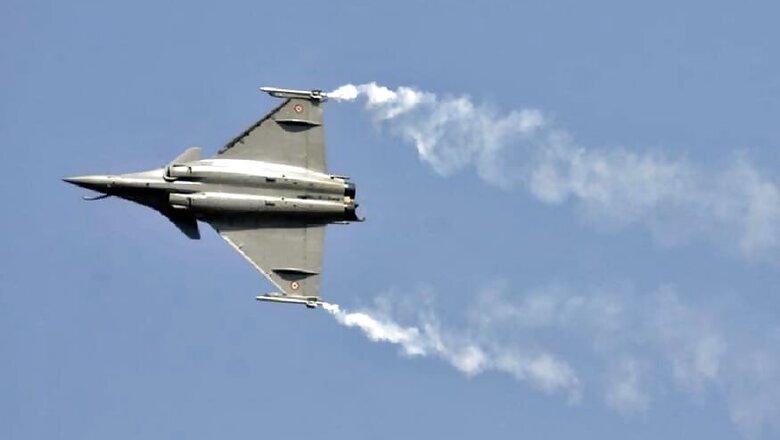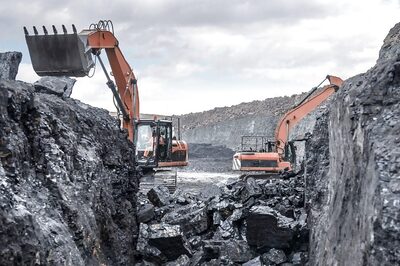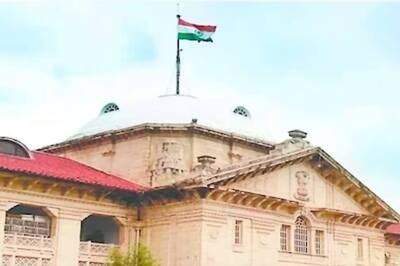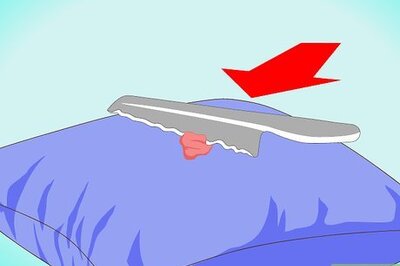
views
New Delhi: Congress president Rahul Gandhi’s fiery speech in Parliament on Friday has once again shone the spotlight on the controversial Rafale deal, which saw the ruling Bharatiya Janata Party (BJP) on the back foot.
The Congress chief said defence minister Nirmala Sitharaman refused to disclose the price of the fighter jets, citing threat to national security. However, Dassault Aviation, in its annual report of 2016 and 2017, says they sold 36 Rafale aircraft for $7.5 billion (Rs 1,670 crore) per aircraft. The same was sold to Egypt and Qatar 11 months ago at Rs 1,319 crore per aircraft, thus highlighting a clear-cut loss of Rs 12,632 crore to the state exchequer, he said. News18 answers some key questions about the deal.
What is Rafale?
Rafale is a twin-engine, multirole fighter aircraft produced by French defence manufacturer Dassault. In 2012, the Indian Air Force (IAF) said the Rafale was its preferred aircraft. During Prime Minister Narendra Modi’s trip to France in 2015, India requested ‘rapid delivery’ of 36 aircraft in flyaway condition. The first squadrons of the Rafale are set to join the IAF fleet by 2019. While the aircraft will bring the much-needed respite for the IAF, the deal had raised several questions. The Congress has alleged that the government struck the deal by overpaying for the aircraft. India bought the 36 aircraft at a price of €7.1 billion.
What is the ‘secrecy clause’ that Rahul Gandhi referred to?
In his speech during the no-confidence motion in Lok Sabha on Friday, Congress president Rahul Gandhi alleged that Sitharaman had “lied” to Parliament at the “behest of the Prime Minister”. He said he had checked with French President Emanuel Macron, who denied that there was a secret pact under which India was asked not to reveal the price of the aircraft.
In February this year, Congress’s Rajya Sabha MP MV Rajeev Gowda, in a written question to the ministry of defence, asked Sitharaman “whether Dassault (the French arms manufacturer of the Rafale jet) was penalised for refusing to fulfil its contractual obligations under the Medium Multi-Role Combat Aircraft (MMRCA) Request for Proposal; if so, the details thereof and if not, the reasons thereof”.
To this, the defence minister replied, “There was no contract with Dassault for medium multi-role combat aircraft.”
However, it was Sitharaman’s reply to the third part of the MP’s question that raised eyebrows. Gowda asked the minister the “cost per aircraft under the Inter-Governmental Agreement for 36 Rafale aircrafts”. To this, she said, “As per ‘Article-10’ of the Inter-Governmental Agreement (IGA) between Government of India and Government of France on the purchase of Rafale aircraft, the protection of the classified information and material exchanged under IGA is governed by the provisions of the Security Agreement signed between the two nations in 2007”.
After several twists and turns, the Indian Air Force is reportedly set to get its share of the aircraft.
Why has India opted for Rafale?
Rafale was not India’s only choice. Several international aviation manufacturers expressed interest upon knowing the Indian government’s mammoth plan to revamp its air force fleet by introducing MMRCAs.
Six renowned aircraft manufacturers competed to bag the contract of 126 fighter jets, which was touted to be the largest-ever defence procurement deal of India.
The initial bidders were Lockheed Martin’s F-16s, Boeing’s F/A-18s, Eurofighter Typhoon, Russia’s MiG-35, Sweden’s Saab’s Gripen and Rafale.
All aircraft were tested by the IAF and after careful analysis on the bids, two of them — Eurofighter and Rafale — were shortlisted. Dassault bagged the contract to provide 126 fighter jets as it was the lowest bidder and the aircraft were said to be easy to maintain.
When did the actual procurement process begin?
The IAF sought additional fighter jets in 2001. The current IAF fleet largely consists of heavy and light-weight combat aircraft. So the defence ministry considered bringing in intermediate medium-weight fighter jets. Though the idea has been around since 2001, the actual process began in 2007. The Defence Acquisition Council, headed by then defence minister AK Antony, approved the Request For Proposal to buy 126 aircraft in August 2007. This kick-started the bidding process.
How many Rafale aircraft are we buying and what’s the cost involved?
The deal was initially estimated to be worth $10.2 billion (Rs 54,000 crore). The plan included acquiring 126 aircraft, 18 of them in fly-away condition and the rest to be made in India at the Hindustan Aeronautics facility under transfer of technology.
After Rafale won the contract, the Indian side and Dassault started negotiations in 2012. While it is usual for such negotiations to stretch to several months, the Rafale negotiations have been on for almost four years now. The agreement was signed in January this year.
Why the delay?
Both India and France witnessed national elections and a change in government while the negotiations were under way. Pricing was another factor. Even during the signing of the purchase agreement, both the sides couldn’t reach a conclusion on the financial aspects. According to sources, the price of an aircraft is about Rs 740 crore and India wants them for at least 20 per cent lesser.
Though the initial plan was to buy 126 jets, India scaled it down to 36, that too in ready condition.
How important is this deal to both India and France?
For France: Rafale jets are currently being used mostly by France and also by Egypt and Qatar. Dassault is hoping that export of Rafale jets will help the company meet its revenue targets. India was the first country that agreed to buy Rafale, after it was used in Libyan airstrikes. If India inducts these jets in its military fold, other nations could express their willingness to buy the aircraft.
For India: India chose Dassault over its traditional partner Russia’s MiG. It also ignored US’ Lockheed at a time when India and US were aiming for closer ties. Procurement of combat aircraft is long overdue for the IAF. Further delay can only make things worse. This deal is India’s biggest-ever procurement. In the effectiveness of the Rafale deal lies the future of other defence procurements.




















Comments
0 comment